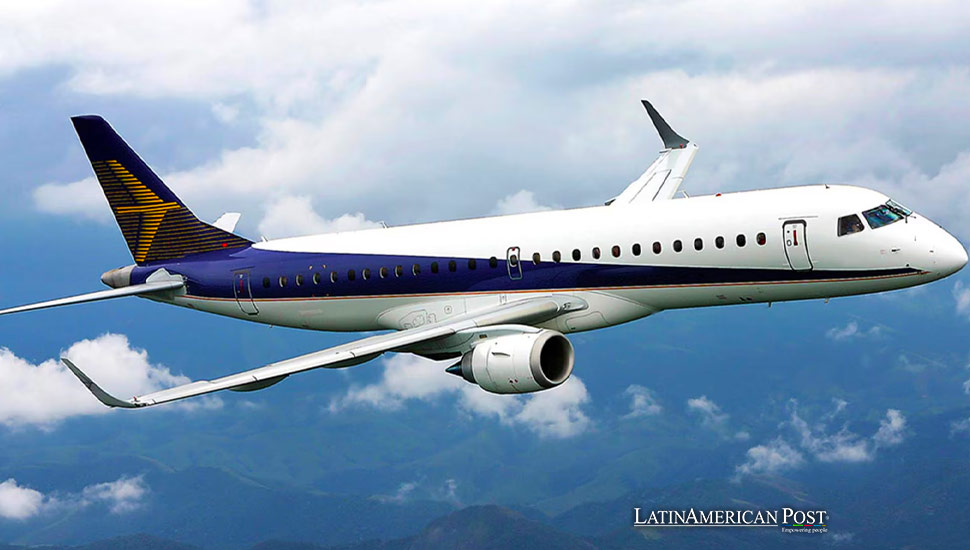Brazilian Embraer’s Strategy Amidst Aerospace Giants’ Duopoly

Embraer, the third-largest planemaker, refutes claims of a new jet designed to directly compete with Boeing and Airbus, emphasizing its current focus on enhancing its successful product lineup without significant new expenditures.
Brazilian aircraft manufacturer Embraer is at the center of industry speculation following a report by The Wall Street Journal suggesting that the company is considering developing a narrowbody jet to challenge the dominance of Boeing and Airbus. However, Embraer has swiftly responded, downplaying these rumors and stating that there are no immediate plans for such an ambitious project, focusing instead on strengthening its existing portfolio.
Embraer’s Strategic Positioning
The speculation comes when the aerospace industry is highly competitive, with major players like Boeing and Airbus tightly holding the reins of the larger jet market. Specifically, those aircraft accommodate over 150 passengers. Embraer, traditionally strong in the regional jet market with its E2 family catering to 90 to 120 passengers, is at a strategic crossroads.
Despite reports of Embraer’s potential to disrupt the market, particularly with a jet that could rival the Boeing 737 MAX and the Airbus A320neo, the company has made it clear that no significant capital expenditure cycle is planned. An Embraer spokesperson highlighted the company’s current strategy: “Embraer certainly can develop a new narrowbody aircraft. However, we have a young and very successful portfolio of products developed in recent years, and we are focused on selling those products and making Embraer bigger and stronger.”
This clarification comes amidst a broader context of recent shifts within the industry. In 2018, Embraer nearly merged its commercial aerospace arm with Boeing, which would have significantly altered its market position. However, the deal fell through by 2020, leaving Embraer to reassess its strategic independence. Further complexity was added when Brazil’s previous government hinted at China as a potential partner, with industry sources also naming India as a possible collaborator.
Embraer’s history of innovation and collaboration highlights its integral role in the global aviation landscape. As the world’s third-largest planemaker, it has carved out a niche in producing jets for regional markets, a sector less touched by Boeing and Airbus but now seeing increasing competition from newcomers like China’s C919 and the Airbus A220, initially developed by Canada’s Bombardier.
Historical Context and Future Prospects
Embraer’s strategic decisions will be closely watched as the aerospace industry continues to evolve. The company has proven adept at navigating market shifts and technological advancements. The industry’s last major investment cycle, which concluded just over a decade ago, saw Embraer developing state-of-the-art technologies that have positioned it well against its competitors.
The potential for a new narrowbody aircraft from Embraer would shake up the aerospace market, but such a development requires substantial investment and time. AerCap Chief Executive Aengus Kelly expressed skepticism about any significant market disruption from Embraer shortly, citing the extensive timeframes and technological advancements needed to launch a new aircraft: “I doubt we’ll see anything in material numbers before the end of the 2030s. It’s impossible to develop a new aircraft, particularly if you need new engine technology; you would have to be well down the track to have that delivered this side of 2030. So that’s not happening.”
In the short term, Embraer focuses on enhancing its current offerings and reinforcing its market position without the burden of entering a costly and lengthy development phase for a new primary aircraft. This strategy reflects a pragmatic approach to maintaining competitiveness and financial health in a challenging global market.
Future Trajectory and Global Influence
Looking ahead, Embraer’s decisions will influence its future trajectory and the dynamics of the global aviation industry. With Boeing recently putting off discussions of a new aircraft and Airbus consolidating its position through models like the A220, the pressure is on Embraer to navigate these turbulent waters with innovative strategies that leverage its existing strengths while exploring future growth opportunities.
Also read: Brazil Sets Steel Import Quotas Amid Rising Concerns
Embraer’s commitment to its product portfolio and strategic independence will be crucial as the aerospace sector continues to face technological, economic, and geopolitical challenges. The company’s response to these industry speculations has reaffirmed its dedication to remaining a key player in the global market, prioritizing sustainable growth over risky ventures into uncertain territories.





